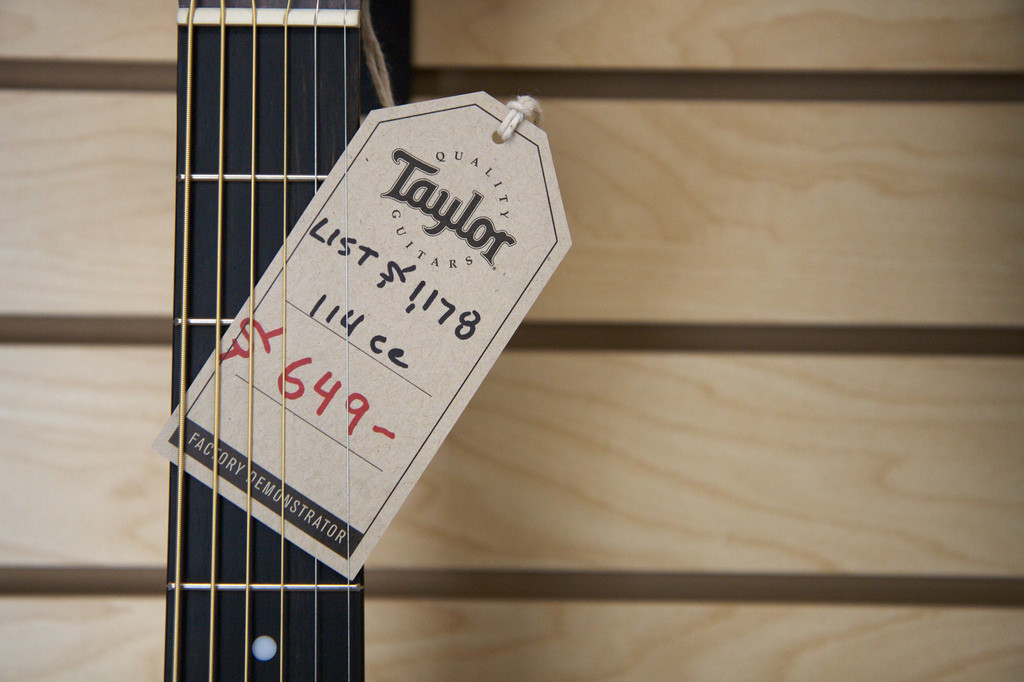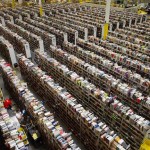Last week, we talked about how your brand is critical as a small business selling online, and an important part of your brand that can’t be ignored is pricing. It’s definitely one of the biggest concerns for small e-retailers, and it’s synonymous with competition. Fortunately, your brand not only helps to determine prices, it can validate them.
A Race That Only Ends in the Red
Pricing is obviously a sensitive topic for most businesses, especially smaller ones. In many cases, it’s considered to be the most important factor in a consumer’s purchase decision, with companies large and small constantly competing on it. But pricing is even more important online because customers can simply type a query into Google and find another price point in a matter of seconds, as opposed to driving to another location like they would at a brick and mortar.
The biggest problem for smaller online retailers is the fact that they’re having to compete on pricing with huge online companies (*cough* Amazon *cough*) that can slash prices on a whim due to their size. Sometimes, to stay competitive and earn sales, smaller e-retailers participate in a race to the bottom – cutting prices continuously due to competitive pressure.
Obviously, the main problem with racing to the bottom is that your margins will eventually reach very narrow levels, or they’ll just bottom out. All businesses can easily take part in the race to the bottom, but it comes at a price. If you’re hacking away at prices, costs must be reduced somewhere. Not only do the larger retailers tend to have a larger supply of products that cause small margins to add up, they’re more than likely able to cut away at costs, unlike a smaller retailer.
That’s why competing on the basis of price isn’t recommended for smaller merchants. Instead, they can justify higher prices with one thing: their brand.
Your Best Friend Is Your Brand
Not everyone can create the same brand. That’s why it’s so crucial for small businesses trying to differentiate themselves online.
Large retailers may have more pricing power, but they tend to go after wider audiences. As a result, their brands tend to be unspecific and, well, just another big brand. Surely I’m not alone in thinking there’s only a sliver of a difference between retailers like Target, Walmart, and Kroger. Even Amazon’s brand, for all its enormity, doesn’t really seem to have a personality. For smaller retailers, this presents an opportunity.
Rather than having a generic brand that attempts to connect with any and all customers, a brand that’s highly targeted and niche is able to tap into a specific audience that identifies with and enjoys the business. We covered the details of how to develop a targeted buyer persona last week, so give the post a look for more info.
Not Everything Is as It Seems
In many cases, consumers are unaware of how much a good actually costs. They don’t know the true cost of production. Instead, they base their purchase decision on feelings. Is the price worth the product? Does it seem like it’s worth XYZ dollars? Marketers tend to treat this as an opportunity, using a strategy called perceived value pricing where the company or product is branded in a certain way to justify higher pricing and larger margins.
You see this strategy everywhere. Grey Goose is priced sky high, but it tastes no different than Smirnoff (in my opinion, at least). Fiji water has a higher markup than something like Orzaka, and it’s just water. It tastes like nothing, yet it’s branded differently to rationalize a higher price point.
It’s a little different online, though. As we mentioned earlier, the nature of ecommerce makes it easy for consumers to compare and contrast prices, giving them a general idea of what a product is really worth. But perceived value pricing can still be implemented through your brand. With it, you can make consumers feel your products are worth a higher value.
Spending on Your Brand
To do that, you have to build an overall customer experience that reflects your brand and hammers it into consumers’ brains. So much so, that they continue returning to you for products. Your brand should be a part of all your marketing, whether it’s social media, website layout, blog posts, email marketing – essentially all customer facing material. Every interaction should reinforce the brand.
Presenting the products in a favorable light (literally) with high quality product images, in-depth production descriptions, and a well designed site are all pieces that need to be connected to the branding puzzle. If you’re able to make the products appear to be of a high quality, you’re that much closer to convincing customers that your price point is a reflection of the quality they’ll be getting (let’s hope that’s actually the case anyway).
It doesn’t stop at your URLs either. Your brand should touch each part of the customer’s purchase process, from site arrival to the second the product touches their hands. Give custom packaging a shot, and see if it works with your margins. Businesses like SoOPAK exist to create custom branded boxes and other packaging materials that make the unboxing experience far more of an experience. The unique feeling of opening a brand infused package will not only brand itself into the customer’s mind, it’ll hopefully translate into glowing reviews and a social media follow.
The Cost of Doing Branding
Whether it’s time or money, everything comes at a cost, and branding is no exception. To tie it back into your pricing, all of the time and money being spent on the customer experience should be grouped into your products’ price points to an extent. For example, if you’re spending additional money in making the unboxing experience incredible and authentic, your pricing needs to incorporate it – it’s all about those margins.
Branding and pricing support one another. Your branding changes over time and so should your pricing. The two feed off one another to create a perception that your products are worth the value (as if they weren’t already). And, most importantly, it’s one of your strongest assets in an area as crowded as ecommerce.
Image: Marcin Wichary, Flickr



